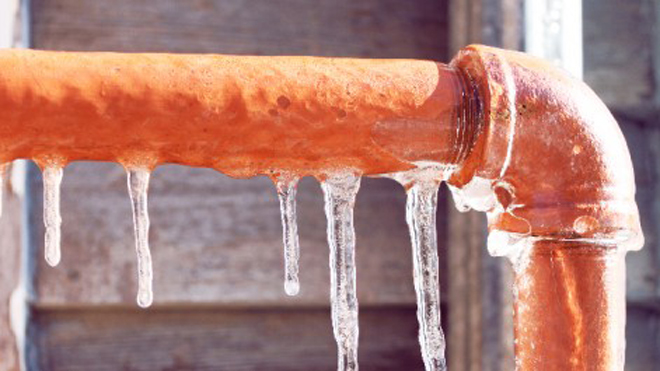Advice for Preventing Frozen Pipes in Cold Weather: Professional Tips
Advice for Preventing Frozen Pipes in Cold Weather: Professional Tips
Blog Article
On this page on the next paragraphs you can discover a lot of outstanding details in relation to Helpful Tips to Prevent Frozen Pipes this Winter.

Cold weather can damage your pipes, specifically by freezing pipelines. Below's just how to prevent it from happening and what to do if it does.
Intro
As temperature levels decline, the danger of frozen pipelines increases, potentially leading to pricey repair services and water damages. Comprehending how to prevent icy pipes is important for property owners in cool climates.
Avoidance Tips
Protecting susceptible pipelines
Wrap pipelines in insulation sleeves or use warm tape to protect them from freezing temperature levels. Focus on pipelines in unheated or exterior areas of the home.
Home heating methods
Maintain indoor spaces appropriately heated, specifically locations with pipes. Open up closet doors to permit cozy air to circulate around pipes under sinks.
How to identify frozen pipes
Search for lowered water circulation from faucets, unusual odors or sounds from pipelines, and noticeable frost on subjected pipelines.
Long-Term Solutions
Structural adjustments
Take into consideration rerouting pipes away from exterior wall surfaces or unheated locations. Add added insulation to attics, basements, and crawl spaces.
Upgrading insulation
Purchase premium insulation for pipelines, attic rooms, and wall surfaces. Appropriate insulation aids preserve regular temperatures and lowers the risk of frozen pipelines.
Protecting Outside Pipes
Yard hose pipes and exterior faucets
Detach and drain yard hoses prior to winter. Set up frost-proof faucets or cover outdoor taps with shielded caps.
Comprehending Icy Pipelines
What causes pipelines to ice up?
Pipelines freeze when exposed to temperatures listed below 32 ° F (0 ° C) for extended periods. As water inside the pipes freezes, it broadens, taxing the pipeline walls and possibly creating them to break.
Threats and problems
Icy pipes can lead to water system interruptions, property damage, and expensive repairs. Ruptured pipelines can flooding homes and cause substantial architectural damages.
Signs of Frozen Water Lines
Determining icy pipes early can avoid them from bursting.
What to Do If Your Pipes Freeze
Immediate actions to take
If you think frozen pipes, keep taps open to alleviate stress as the ice thaws. Use a hairdryer or towels taken in hot water to thaw pipelines slowly.
Conclusion
Preventing icy pipes calls for positive measures and quick responses. By comprehending the reasons, indications, and safety nets, property owners can shield their plumbing throughout winter.
6 Proven Ways to Prevent Frozen Pipes and Protect Your Home
Disconnect and Drain Garden Hoses
Before winter arrives, start by disconnecting your garden hoses and draining any remaining water. Close the shut-off valves that supply outdoor hose bibs and leave the outdoor faucet open to allow any residual water to drain. For extra protection, consider using faucet covers throughout the colder months. It’s also important to drain water from any sprinkler supply lines following the manufacturer’s directions.
Insulate Exposed Pipes
Insulating your pipes is an effective way to prevent freezing. Pipe insulation is readily available at home improvement stores and is relatively inexpensive. Pay close attention to pipes in unheated areas such as the attic, basement, crawl spaces, or garage. Apply foam insulation generously to create a buffer against the cold. You can also wrap your pipes in heat tape or thermostat-controlled heat cables for added warmth.
Seal Air Leaks
Inspect your home for any cracks or openings that could let in cold air. Seal any holes around the piping in interior or exterior walls, as well as the sill plates where your home rests on its foundation. Additionally, make sure to keep your garage door closed unless you’re entering or exiting. Leaving it open creates a significant air leak that can lead to frozen pipes.
Allow Warm Air Circulation
During cold snaps, it’s essential to allow warm air to circulate evenly throughout your home. Leave interior doors ajar to promote better airflow. Open kitchen and bathroom cabinets to help distribute heat consistently around the rooms. If you have small children or pets, be sure to remove any household chemicals or potentially harmful cleaners from open cabinets for safety.
Let Faucets Drip
A small trickle of water can make a big difference in preventing ice formation inside your pipes. When temperatures drop significantly, start a drip of water from all faucets served by exposed pipes. This continuous flow helps prevent the water from freezing. Additionally, running a few faucets slightly can relieve pressure inside the pipes, reducing the chances of a rupture if the water inside does freeze.
https://choateshvac.com/6-proven-ways-to-prevent-frozen-pipes-and-protect-your-home/

I recently found that entry on Helpful Tips to Prevent Frozen Pipes this Winter when doing a lookup on the web. Be sure to take a moment to distribute this content if you liked it. Many thanks for your time spent reading it.
Check Us Out Report this page